The Price of Progress
Viva’s new bus rapid transit plan promises to create a better, more progressive public transit system with efficient “rapidways” spanning York Region. But construction has left Highway 7 a mess and massive traffic delays have deterred customers from visiting the area. Local businesses are limping along. Their future is uncertain
It’s 11 a.m. on a freezing January morning and things are quiet at Santino. The family-run restaurant and catering company has occupied this location in the retail plaza just east of Keele Street along Highway 7 for the past 20 years, and its staff is doing what it normally does at this time: gearing up for the lunch rush that will pick up closer to noon. Soon, a pair of construction workers wearing orange and yellow reflective work gear walk in and order from the hot counter running parallel to the restaurant’s back wall. More customers arrive — groups of businessmen in collared shirts, casually dressed staff from other businesses in the surrounding area, more labourer types — and the restaurant hums with the midday crowd. It’s a lively scene. But as Joe Mainolfi explains, it’s not as busy as it was just several months prior. And the reason is simple: construction.
“The foot traffic for the front of the restaurant has slowed down considerably,” explains Mainolfi, who, along with his sister Carol and mother Stella, runs Santino. Mainolfi estimates that his business has taken a 30 per cent hit over the past six to eight months as the construction for the forthcoming vivaNext rapidway transit system intensified along Highway 7 between Bowes Road and Edgeley Boulevard. “Once they cut off the CN Bridge there, that’s when we really noticed the drop in business.”
This has become the norm for many businesses along this stretch of Highway 7. It’s not uncommon to hear the area described as “slow” or “dead,” and those that rely on walk-in customers — restaurants and various retailers — are feeling the squeeze of this drought. Many believe the root of the problem is right outside, that the substantial delays in travel time caused by the major construction project to completely overhaul Highway 7 are deterring would-be customers from making the journey to the area.
“Since they started expanding the road for Viva, we’ve lost quite a bit of traffic because people don’t want to come in,” says Alex Davidov, partner at Brizzo Lighting. Davidov opened his lighting fixtures retailer in the area in 2010 because the location provided great visibility from Highway 7. But with the recent delays caused by the construction, many customers are simply avoiding the area altogether — people simply don’t want to spend hours sitting in traffic.
The lengthy slog through this area of Highway 7 has become customary for drivers over the past year. Construction has reduced the roadway from six lanes to four, squeezing east and westbound traffic into a bottleneck. In the mornings, a trip from Bowes Road to Weston Road could often take 20 to 30 minutes, sometimes more. In the evenings, with the swarm of traffic filling the streets at the end of the workday, there were periods when the crawl east from Weston Road to Bowes Road, past the orange and black construction pylons shifting traffic, could take north of 40 minutes, if not longer.
Davidov explains that comparing November 2012 to November in 2013 and 2014 shows a “big drop” in business. December, he notes, is always a crucial time for retail. But that didn’t prove true this year. “Every December we increase our spending on advertising, and starting in 2013 the December was worse than, say, November or October.” Which, he adds, is never a good thing.
This road construction first began in late 2013 as phase one of the Vaughan portion of the vivaNext rapidway, which is part of the bus rapid transit network being developed throughout York Region. This ambitious project is fuelled by a $1.8-billion investment from the provincial agency Metrolinx and involves widening various roadways on major corridors across York Region to incorporate 34 kilometres of dedicated bus lanes that will run along the centre of certain stretches of roads. These include Davis Drive and a portion of Yonge Street in Newmarket, Yonge Street north of Highway 7 to 19th Avenue (Gamble Road) in Richmond Hill, and the length of Highway 7 from as east as Unionville Station in Markham to as west as Helen Street in Vaughan. When completed, the dedicated bus lanes will decrease transit time and give the streets a complete refresh that will include fully landscaped boulevards and added bike lanes and sidewalks to areas where there weren’t any before.
Future plans will extend the rapid transit network north along Yonge Street from 19th Avenue (Gamble Road) to Mulock Drive in Newmarket, and east along Highway 7 to Cornell Centre Boulevard and west along Highway 7 to close to Highway 50.
This transportation network will be a key piece of Vaughan’s new downtown, connecting residents with the forthcoming Spadina subway extension, providing better public transit and (hopefully) easing much of the gridlock that has plagued Highway 7. Before work began, Metrolinx also estimated that the entire project would be a serious driver of economic growth, creating an estimated 11,000 jobs across
York Region.
Of course, it’s nothing new for construction to disrupt business — it happens any time the jackhammers and paving machines post up right outside your store. But few projects come with a time commitment of this magnitude. The initial work on the rapidway in Markham and Newmarket began in April 2011, with the first stretch of the rapid transit service launching in August 2013 and the second stretch in August 2014. In Vaughan, the initial work of phase one along Highway 7 (between Bowes and Edgeley) began in 2012 with roadway construction commencing towards the end of 2013. Its target completion date is scheduled for fall 2016, nearly three years later. Early preparation on phase two of the Vaughan rapid transit network is already underway, and the project will extend construction along Highway 7 well into 2019. Although it does seem that the phase one construction causing the biggest delays is behind us — recent evening trips clocked in at about 20 minutes going east from Weston to Bowes — businesses along the affected area have yet to see customers return.
Businesses like Maple Auto Body. In the 45 years Vito Guerra has owned Maple Auto Body (which in turn has been open for over 50), he’s never seen business so bad. Over the past year, he estimates that his business has dipped by a third. One of the major problems is how the construction of the dedicated bus lanes — and the bus lanes themselves — prevents people from making left-hand turns. Before the construction began, drivers travelling west and east were free to turn left onto side streets and into plazas. Now the only place drivers can turn left is at major intersections, meaning they need to travel in a larger loop to get to destinations on the opposite side of the road.
Guerra believes if you continuously offer quality business and keep customers satisfied they will always come back. But he’s also concerned that businesses along this stretch of road could face the same fate as those along the U.S. 19 highway in Clearwater, Florida. Over the past few years, numerous businesses in strip malls along U.S. 19 have shut down as the roadway has changed into an elevated, limited-access freeway. The new freeway allows traffic to flow at high speeds, but also prevents drivers from making left turns where they could before. “A lot of businesses you see on the side just shut down,” says Guerra’s son Steven. “Some businesses were there for over 30 years. You see the signs, ‘Over 30 years,’ but they’re closed.”
“I hope it doesn’t happen here,” adds Guerra.
Dale Albers, spokesman for Viva, explains that the benefits of the rapidway are already being seen in the corridors where construction has completed. On Highway 7 between Town Centre Boulevard in Markham and Bayview Avenue in Richmond Hill, travel time for buses has decreased by 35 per cent and ridership has increased by 10 per cent, he explains. While the rapidway project is an exciting opportunity, one that benefits the region with substantial investment and improved infrastructure — something many cities are envious about — Albers acknowledges “the downside is that it does take a number of years to do the work.”
In an attempt to mitigate the impact, Viva implemented a business support program in 2009 in anticipation of the effects the massive, region-spanning construction would have on businesses, residents, transit riders and the community at large. The evolving program includes several visible and non-visible features: a complimentary membership to boards of trade or the Chambers of Commerce for businesses affected by the construction; educational services for business owners to learn effective marketing strategies, such as social media and improved search engine optimization for websites, during times of change; two annual advertising campaigns that include newspaper, radio, social media and bus ads promoting business in the area; and community liaisons. “So it’s a comprehensive program to try and encourage those that live in the neighbourhood to continue to do business with those in the area,” says Albers.
One of the more visible aspects of Viva’s business support program is roadside signage that draws attention to the various plazas along Highway 7. Some signs let drivers know that things are “Open For Business,” while electronic messaging boards encourage passersby to “Stop, Shop & Dine Hwy 7” and to “Support Hwy 7 Businesses.”
But that support isn’t translating into income. “They got a few signs, ‘Support Highway 7 Business,’ but —” Davidov says with a shrug. While he did receive a letter from Viva offering free membership with the Chamber of Commerce, Davidov feels it doesn’t do much for his business.
Several owners suggested that it would be helpful to receive some kind of compensation, perhaps a tax break, and are preparing to approach the city. After all, the construction, something that is out of their control, has hindered their operations, but they’re still expected to pay the same tax. “They want their tax,” says Guerra. “If you don’t do business, how are you supposed to pay them?”
Sandra Yeung Racco, city councillor of Ward 4 where the rapidway construction is happening, says that while a tax break is not something the city has spoken about, “it’s not something I would say no to. It’s certainly something that we can consider.” Racco explains she hasn’t yet received complaints from business owners in the area and, in fact, my contacting her about it is the first she’s heard of the matter. “Now that you’ve brought it to my attention, I would take a look at it and see if there’s any way of helping them, because as I say, we value our businesses and we certainly would like to help in whatever way we can,” she says. No promises can be made, she adds, but “I think if there’s ways of doing it we certainly will explore that.”
Phase two of the rapidway construction in Vaughan will include road widening along Highway 7 from Edgeley Boulevard to Helen Street, and from Bowes Road up Centre Street to Yonge Street. Preliminary work is already underway. Contracts will be awarded this summer and early, below-ground work — such as replacing and updating water mains, sewers and utilities, as well as geotechnical work — could begin in the fall and carry into 2016. The road construction along these stretches will likely begin in the summer of 2016. What, if any, impact that will have on business in those areas is yet to be seen.
Phase one of construction along Highway 7 was 30 per cent complete at the end of 2014 and is expected to wrap up in fall of 2016 to coincide with the completion of the subway line. But construction of the subway has faced delays and may miss the fall-2016 target. Albers notes it’s too premature to say how this will affect construction of the vivaNext project. Until construction finishes, or until they receive help from the city, businesses in that area of Highway 7 will need to soldier on alone, weathering the storm or finding new ways of generating business to keep their heads above water.
Guerra notes he gets a lot of business from word of mouth and thinks it will be enough to last. But “it’s hard to say.” Davidov explains that online sales have helped soften the blow, but they’re still trying to compensate for the hamstringing loss in-store. “Once it’s completed, that’s fine,” he says of the construction. But he will need to survive until the end of 2016. “So two years is a long time.”
Catering is a key piece of Mainolfi’s business and that additional source of income has buoyed the restaurant during this difficult period — even if making deliveries means taking the 407 from time to time to bypass traffic. And despite the slowdown, Mainolfi is optimistic and is firm in the belief that things will improve once the work is complete and the area continues to develop. “Short-term pain for long-term gains, that’s the way I look at it,” he says. “I’m confident this will be downtown Vaughan, eventually.”
And for many businesses in this area that’s the crux of the matter. Things will get better — eventually. But eventually can be a long time.


































































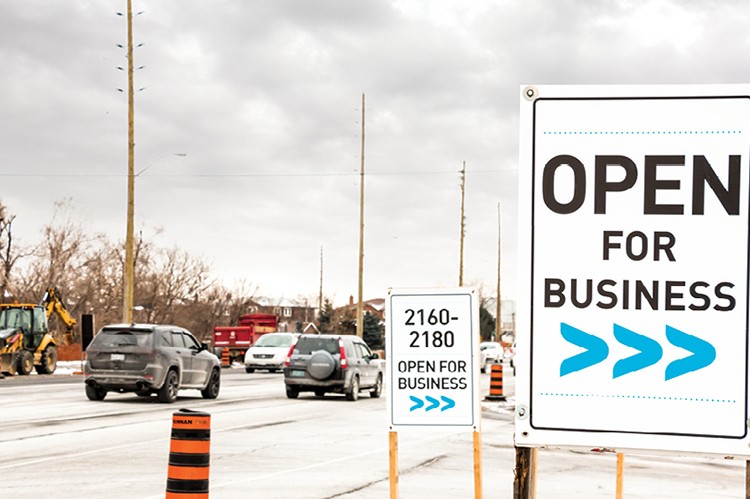
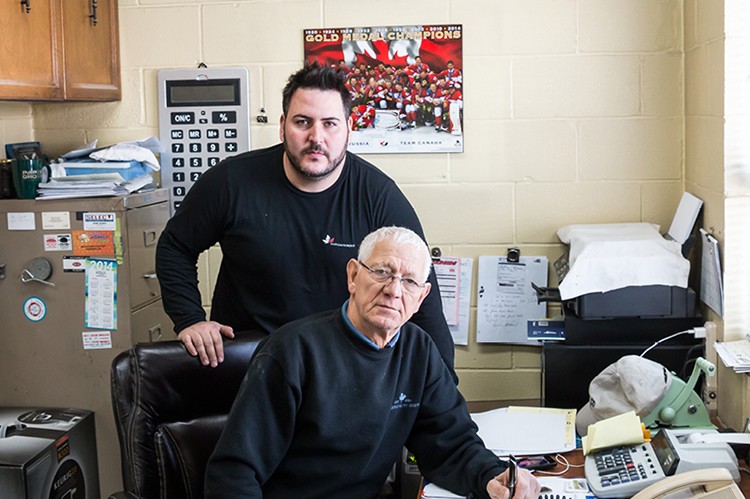
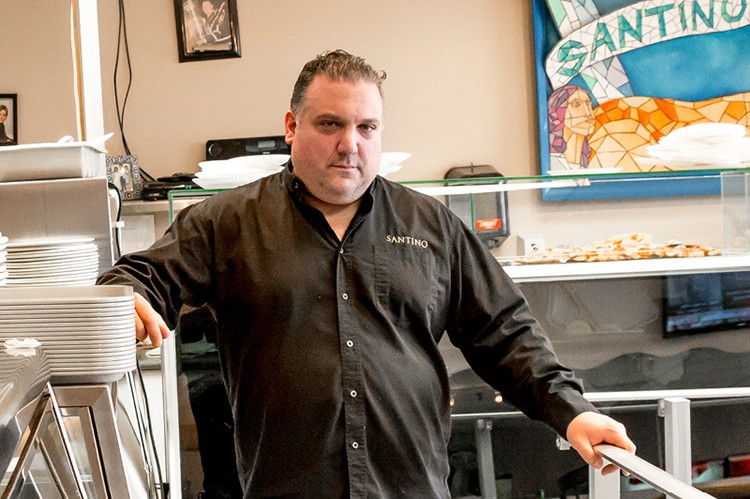
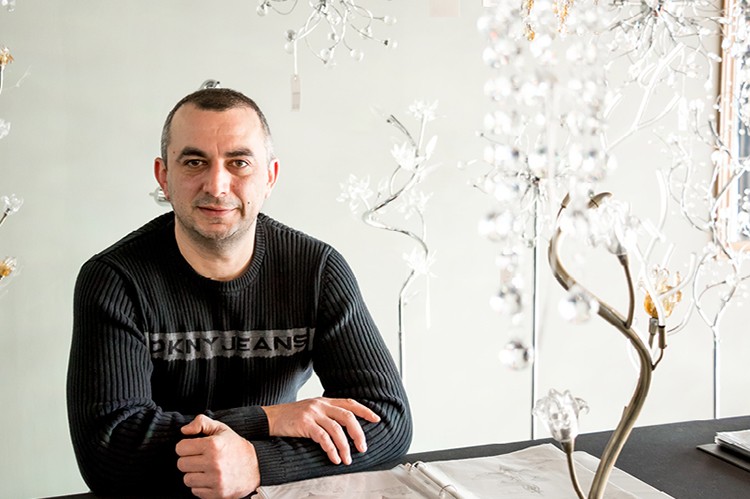
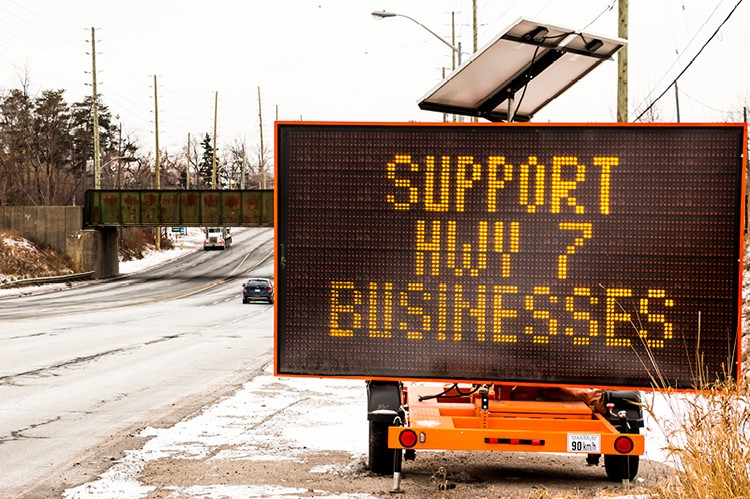
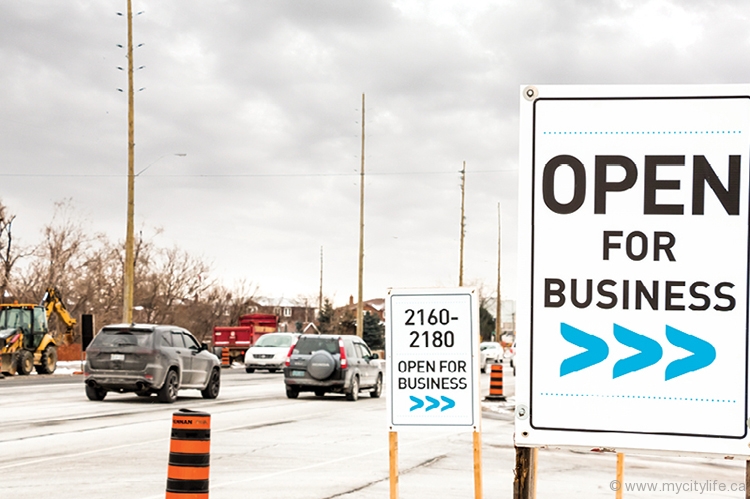


1 Comment
We are running a Subway Sandwiches franchise restaurant at the intersection of Keele Street and Hwy-7. Since last year our business has dropped to the range of 20 to 30 percent. Is it possible that Viva can compensate this business loss? Our majority customers are drivers rather than pedestrians, hence due to the traffic jam caused by this construction has badly affected our business.